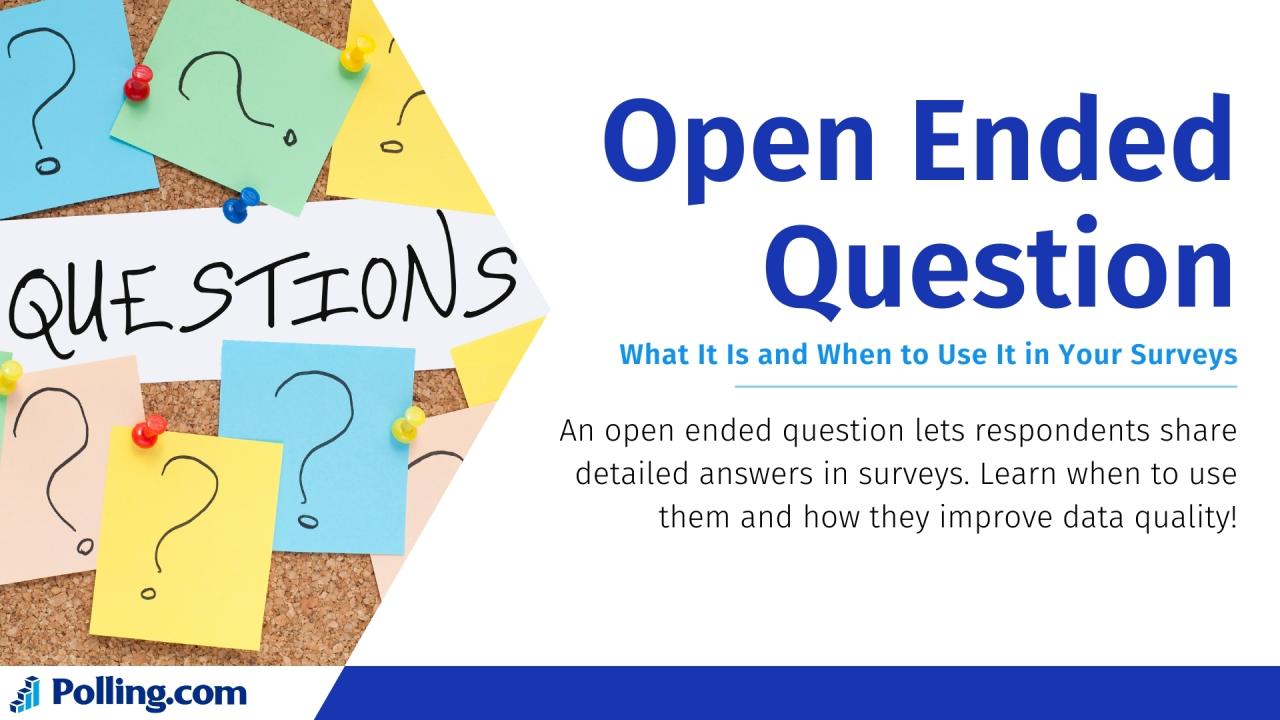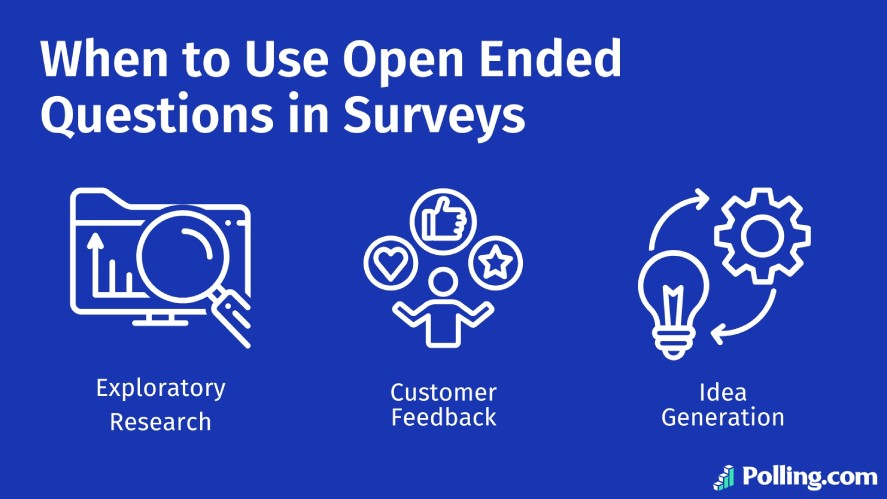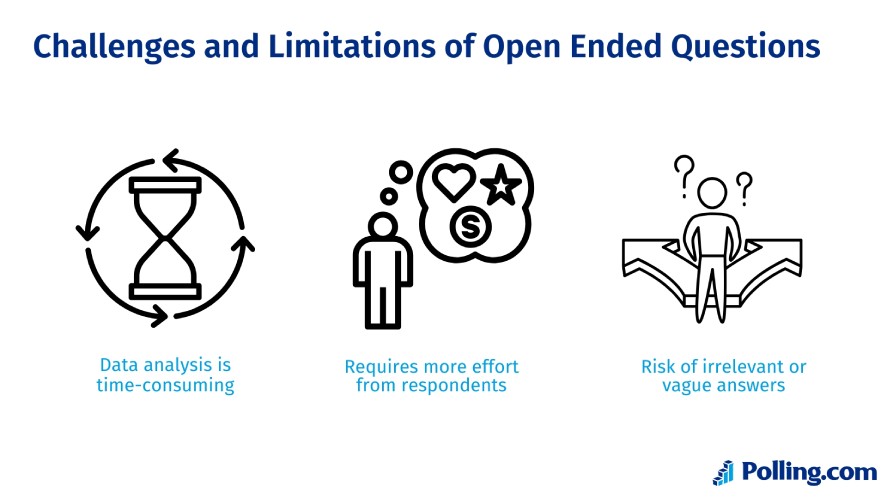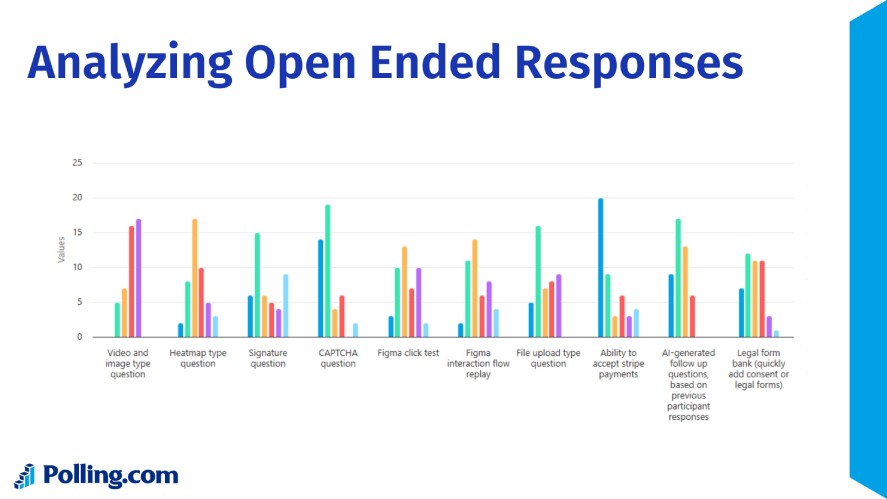
Open Ended Question: What It Is and When to Use It in Your Surveys
When you’re building surveys, picking the right question types for surveys can make all the difference in the data you get back.
There’s a whole mix to choose from, some pin respondents down to a quick yes or no, while others let them spill their thoughts in detail, and getting that balance right is key to pulling quality answers.
That’s where open ended questions come in as a standout tool. They’re a big part of the survey question types toolbox, giving respondents room to share what’s really on their minds.
This guide digs into what makes open questions special and why they’re worth using in your next questionnaire.
What is an Open Ended Question?
So, what is an open ended question?
It’s a type of survey question that lets respondents answer in their own words, with no preset options or limits, just pure, free-form open ended responses.
Unlike close ended questions, which box respondents into specific choices, open ended questions are wide open, asking for thoughts, feelings, or ideas without steering the answer.
The meaning of open ended questions is all about flexibility. They’re less about quick stats and more about digging into the “why” or “how” behind what respondents think.
For example, in surveys, you might see open questions like “What do you like most about our product?” or “How can we improve your experience?”. These are classic examples of open ended questions that spark detailed feedback.
Compared to a closed-ended “Did you like our service? (Yes/No)”, an open ended questionnaire invites richer, messier, and often more useful open ended answers, making it a go-to when you want depth over speed.
When to Use Open Ended Questions in Surveys
Open ended questions shine in specific spots, so knowing when to pull them out can level up your surveys.
They’re perfect for exploratory research. For example, when you’re kicking off a project and need to figure out what respondents even care about, letting their open ended answers guide your next steps.

Then, there’s customer feedback, asking “What could we do better?” after a purchase pulls in raw thoughts you won’t get from a yes/no. They’re also great for idea generation, like brainstorming new features where respondents toss out wild suggestions.
Some of the best scenarios include Net Promoter Score (NPS) follow-ups, like “Why did you give us that score?”, or political polling, where “What matters most to you this election?” digs deeper than a checklist.
Product feedback is another win. For example, a question like “How do you use our app day-to-day?” can spark ideas for tweaks.
Polling.com’s survey tool makes this easy. Its flexibility lets you mix question types for surveys, blending open questions with closed ones to get both depth and quick stats, all in one go.
Advantages of Open Ended Questions
So, why bother with open ended questions?
For starters, they deliver rich qualitative data. Those open ended responses give you meaty details and stories, not just numbers, painting a fuller picture of what respondents think.
Plus, they uncover new insights you might not see coming. Unlike close ended questions where you guess the options, an open ended questionnaire lets respondents surprise you with fresh angles or pain points.
And then there’s the emotional side. How to ask open questions like “What did you feel about our service?” pulls out deeper, opinion-based answers, which is the stuff that shows passion or frustration you’d miss with a 1-5 scale.
Whether it’s in surveys or a broader questionnaire, these advantages make open questions a powerhouse for understanding the “why” behind the data, giving you a real edge in spotting what matters most.
Challenges and Limitations
Open ended questions aren’t perfect. They come with some hurdles you’ll need to watch out for in your surveys.
First off, data analysis can be a slog, as sorting through all those open ended responses takes way more time than tallying up a 1-5 scale, especially if you’ve got hundreds of answers to go through.

Plus, they ask more from respondents, so some might skip it altogether.
And then there’s the risk of getting off-track. You might end up with vague or irrelevant open ended answers like “It’s fine” or “I don’t know,” which don’t help much.
These quirks mean open questions aren’t always the quick fix, sometimes they’re a trade-off for deeper insight.
Best Practices for Writing Effective Open Ended Questions
To get the most out of open ended questions, you’ve got to write them smart.
Start by keeping them clear and focused. A question like “What did you think of our service?” beats a fuzzy “Tell us everything!” so respondents know what to zero in on.
Next, steer clear of leading or biased phrasing, swap “Why was our product amazing?” for “What’s your take on our product?” to keep those open ended responses honest.
Also, ask one thing at a time. Piling on “What do you like and dislike and why?” can confuse folks. You should split it up for cleaner answers.
Finally, encourage elaboration with a nudge like “Please share details on what stood out to you?”. It’s a simple trick in how to ask open questions that pulls richer feedback for your types of survey questions.
Analyzing Open Ended Responses
Once you’ve got those open ended responses rolling in from your surveys, figuring out what they mean can feel like a big lift, but there are ways to tackle it.
You can go manual, reading through each answer and sorting them into themes, which works fine for small batches but gets messy fast with hundreds of respondents.

On the flip side, AI-driven analysis speeds things up. Text analysis tools can scan open ended answers, spot patterns, and tag sentiments like “happy” or “frustrated” in seconds, cutting hours off your work.
Coding methods help too. They assign labels like “positive” or “needs work” to chunks of text for easier tracking across your questionnaire.
Polling.com steps in here big time! Its tools simplify analyzing qualitative data, turning messy open ended responses into clear insights with built-in features that highlight trends and key phrases, so you’re not drowning in words.
Combining Open Ended and Closed Ended Questions
Mixing open ended questions with close ended questions is often the sweet spot for surveys.
A blended approach gives you the best of both worlds: close ended questions deliver quick, countable stats, while open questions dig into the “why” behind those numbers, adding depth to your survey question types.
For example, a structure might start with “Did you like our product? (Yes/No)” and follow with “What did you like most?”. It’s a clean way to pair hard data with rich feedback in your questionnaire.
This also shines in Net Promoter Score (NPS) surveys. For example, after “How likely are you to recommend us? (0-10)”, you toss in “What’s the main reason for your score?” for open ended answers that unpack loyalty vibes.
Political surveys love it too. A question like “Who will you vote for?” then “What issue matters most to you?” can get sharper insights from respondents.
Combining these question types for surveys means you’re not guessing, you’re building a fuller picture with every response.
Conclusion
Open ended questions are your go-to when you need more than just numbers. They’re perfect for exploratory research, digging into customer feedback, or sparking new ideas from respondents in your surveys.
Sure, they take more effort to analyze and might get a vague reply here and there, but the depth they add to your survey question types makes it worth it, especially when mixed with quicker question types for surveys.
Want to see how they work for you? Try Polling.com’s free survey tools! Give it a shot and watch your data come alive!
